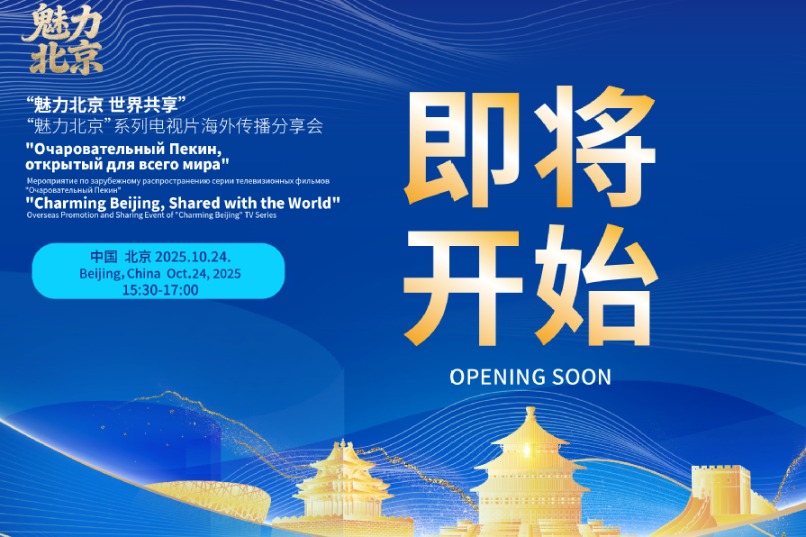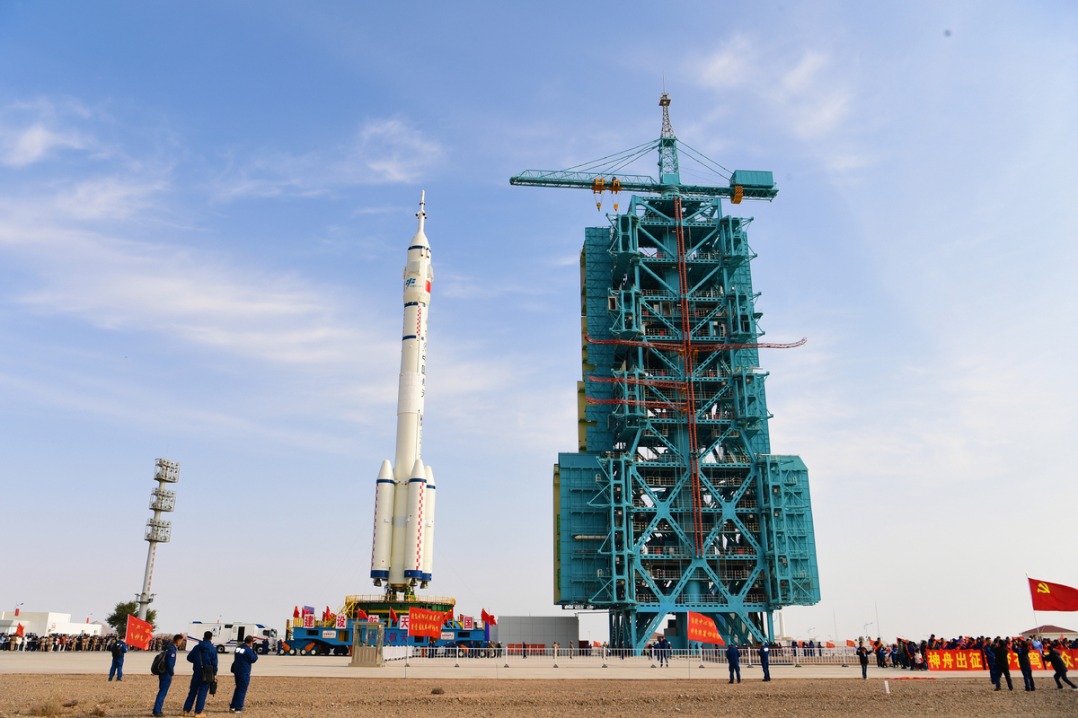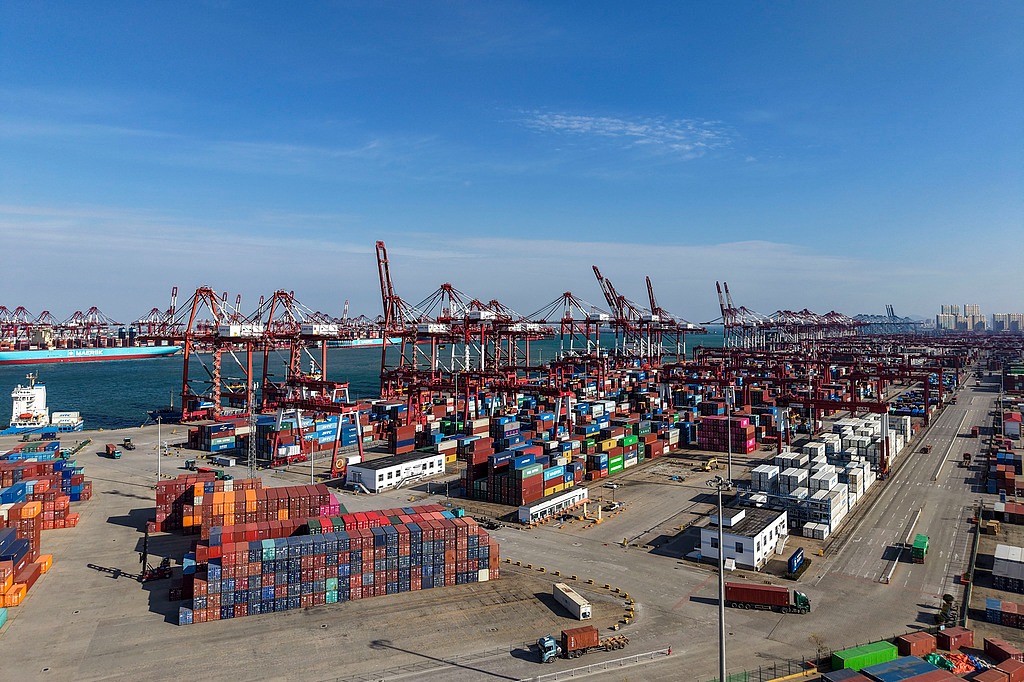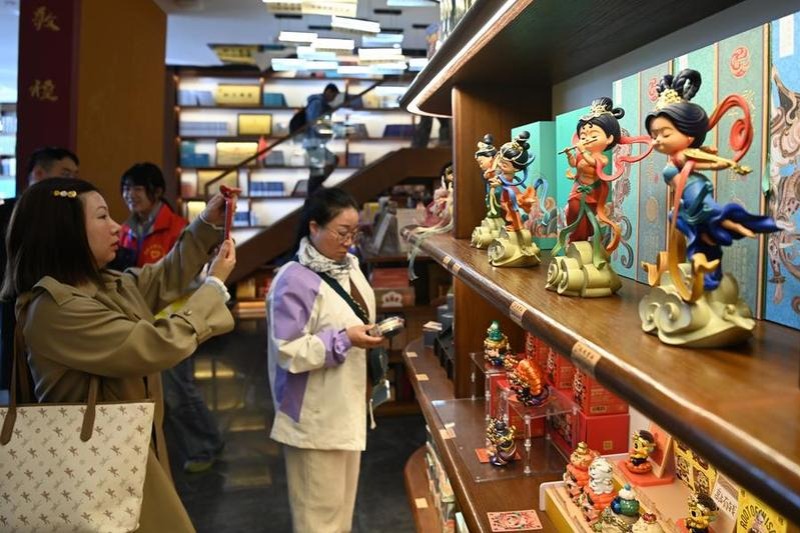Global geopark in Tanzania revived with Chinese aid
Project shows power of green development and technology

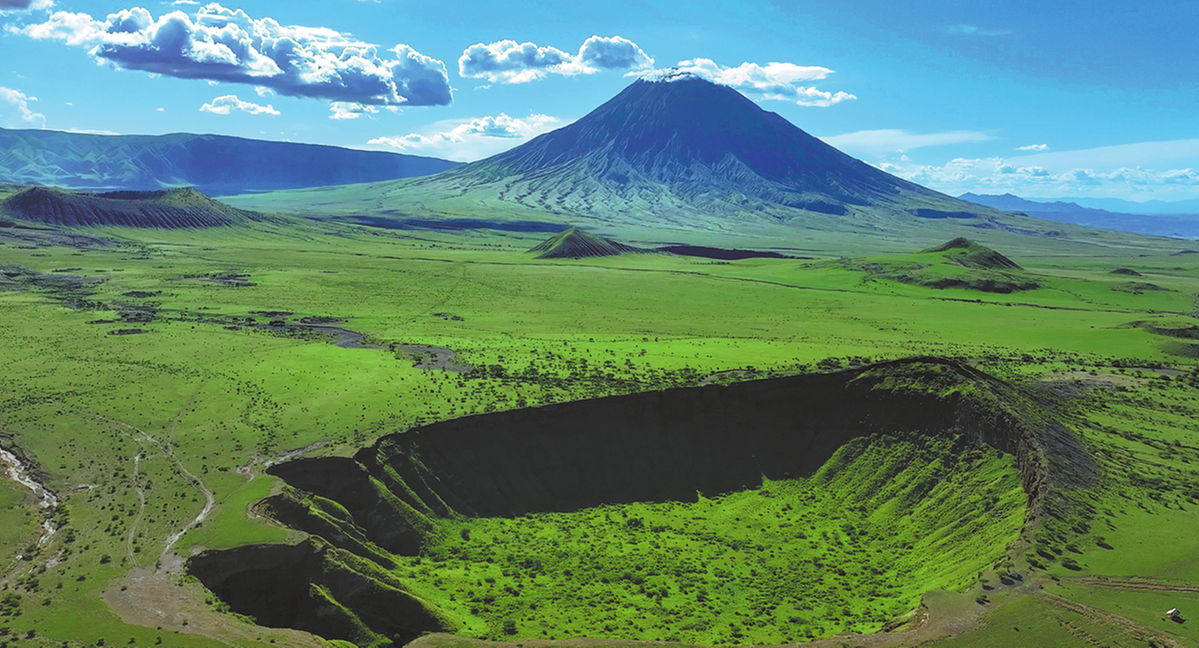
One day at 3 am in September 2023, over 50 people, out of breath, gathered at the Ol Doinyo Lengai volcano in the northern part of the Ngorongoro-Lengai Global Geopark in Arusha, Tanzania, to witness a marvel — molten lava, as clear as melted gold, flowing through cracks in the crater. Steam mixed with the orange-red lava and the black volcanic ash, creating a thick "river of fire".
These Chinese and Tanzanian nationals, feeling the scorching heat and smelling the strong sulfur in the air, had been climbing for more than seven hours. The climb, with an altitude gain of nearly 3,000 meters and a 45-degree incline, had pushed them to their physical limits.
Their work, the geoheritage survey of the volcano crater, as part of the reconstruction project undertaken by the Chinese government to assist in the development of Tanzania's first and only global geopark, had to be done before dawn. Once sunlight hits, the lava in the crater gradually turns gray, resembling an ordinary muddy river.
And for this route alone, the geological workers had climbed four times to obtain data on the geological heritage sites and plan sightseeing and scientific expedition routes for the area.
From nearly being excluded from the UNESCO Global Geoparks Network to having its construction progress fully recognized, the revival of the Ngorongoro-Lengai Global Geopark — the first geopark built with China's foreign aid — has fully demonstrated China's wisdom of empowerment through green development and technology, as well as its philosophy of harmony between humans and nature.
Located in northeastern Tanzania, it is the only global geopark in Sub-Saharan Africa with internationally significant geological features. It is renowned for the Ngorongoro Crater, the active Ol Doinyo Lengai volcano and the paleontological sites of the Olduvai Gorge, opening the doors to tourism, conservation, education and research.
In 2018, the United Nations Educational, Scientific and Cultural Organization endorsed it as a global geopark, covering around 12,000 square kilometers across the Arusha districts of Ngorongoro, Karatu and Monduli. However, due to problems such as poor fundamental infrastructure, inadequate visitor information and insufficient scientific interpretation content, the geopark received a yellow warning from UNESCO in 2022 and was given a two-year period for corrections and reevaluation.
China stepped in to assist at that critical moment. During Tanzanian President Samia Suluhu Hassan's visit to China in November that same year, she and Chinese President Xi Jinping attended the signing ceremony for a China-aided project aimed at addressing the challenges faced by the geopark. Supported by the Agency for International Economic Cooperation of the Ministry of Commerce, the Chinese Embassy in Tanzania and the China Geological Survey, the project has included both technical assistance from the Tianjin Center of the China Geological Survey and physical infrastructure handled by the China Railway 25th Bureau Group.
"As the inaugural China aid geopark project, all the people are 'crossing the river by feeling the stones'," said Ren Junping, director of the Southern Africa Geological Survey Cooperation Center of Tianjin Center, who led the project.
"We are responsible for the entire workflow, from planning and implementation to construction," Ren said, adding that there were challenges in balancing the local needs with respect for nature in the planning process, as well as the necessity to work together to address logistical problems and deal with the frequent downpours.
Ren considered the investigation of geological heritage resources as the foundation of the project, with the purpose of determining the distribution and availability of resources within the area. This could provide essential data for spatial planning, scientific expedition route design, and the establishment of a database encompassing geological heritage as well as natural and cultural resources.
Over a period of more than a year, the team completed a thorough investigation of the geopark, which included examining geological heritage sites, shallow groundwater sources and volcanic structure rock strata characteristics, as well as the interpretation of remote sensing geological data.
Sun Kai, a project member from the Tianjin Center, also emphasized the complexity of the project.
"This project demands more comprehensive capabilities than conducting domestic geological heritage work," Sun said. "It involves not only geological surveys but also visitor information for public outreach and digitalization."
In addition to essential tools like geological hammers, team members need to carry photographic equipment such as cameras and drones when conducting geological surveys to help produce scientific materials and exhibit designs, he said.
Li Lei, a project member from the Tianjin Center, said that China's information technology has been exported to develop a tourist-oriented service platform centered around the geopark's resource data, supported by interpretation and information systems.
Currently, nearly 300 signs, including interpretive, directional and safety warning ones, have been erected in the geopark — all in English, Swahili and Chinese. A field interpretation system is also in place, offering interpretive scripts for key locations in seven languages of English, Swahili, Chinese, French, German, Spanish and Arabic.
While designing the landmark building of the new geological museum — a requisite for a global geopark — the team chose not to employ complex artificial intelligence technologies considering the frequent power outages in the local area. Instead, they installed solar panels on the exterior walls and used simple electrical systems to power interactive exhibits, such as animal racing and volcanic eruption simulations.
The museum's design draws inspiration from the style of Tanzanian thatched huts, conveying to visitors the story of volcanic activities in the East African Highlands and human evolution, while promoting the ideals of respecting, conforming to and protecting nature.
"It was a novel experience for everyone," said Wu Xingyuan, a project member from the Tianjin Center.
The geopark provides a lush habitat with abundant water and grass for 300,000 wild animals, including wildebeest, zebras, lions, rhinoceroses and elephants, creating a self-sustaining tropical savanna ecosystem.
"Once, while sitting in the vehicle, we saw a lion lying right by the car window," Wu recalled. "Thus, we have to hire armed security personnel to manage the dangers posed by wildlife."
To protect these animals, primitive dirt paths are maintained to prevent damage to their hooves. Additionally, work must cease, and everyone must leave by 5 pm, returning the area to the wildlife, Wu said.
"Another distinctive feature of the geopark is that it is home to nearly 400,000 residents, with the vast majority being Maasai," Wu added.
To honor these indigenous people who have lived here for generations, the team has organized tours where visitors can immerse themselves in the Maasai way of life, sample their traditional food and dance alongside them.
Additionally, the team has implemented a one-month talent training program for local residents, providing them with comprehensive knowledge about the geopark. This includes basic geological knowledge, the formation mechanisms of significant geological heritage sites, as well as training in the use of geological disaster monitor equipment.
The hard work bore fruit when UNESCO successfully revalidated the geopark in December last year, and the project is on track for completion by November.
Zhang Jianping, vice-president of the Global Geoparks Network and a professor at China University of Geosciences (Beijing), emphasized the "extreme importance" of China's foreign-aid project for the geopark. He noted that it has enhanced local infrastructure and economic opportunities while boosting cultural exchanges and ecological protection.
"As one of the only two global geoparks in Africa — the other is in Morocco — the Ngorongoro-Lengai Global Geopark is rich in geological, biological and cultural resources. Its conservation is quite good, but the geopark management is relatively weak," Zhang said.
"The authorities and staff members need to fully understand the philosophy of UNESCO Global Geoparks. Therefore, capacity building is very important for them, as it can lead them to pay more attention to considering local residents' needs and aspirations. It is greatly appreciated that this project included the training courses," he added.
Zhang Zhonghui, a senior engineer and a member of the Geological Society of China, described the foreign-aid project as "a paragon of international cooperation".
"The project has not only helped Tanzania create a batch of distinctive cultural and tourism products and activities but also achieved long-term empowerment through personnel training and improvements in local livelihoods," Zhang Zhonghui said.
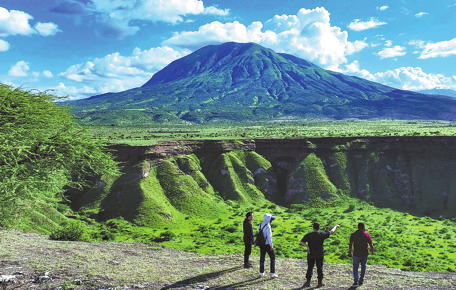
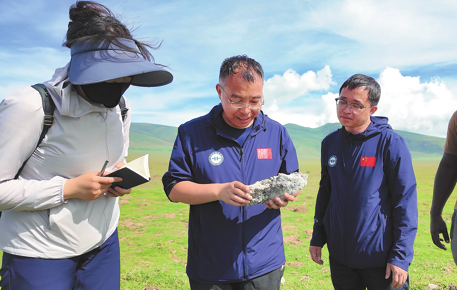
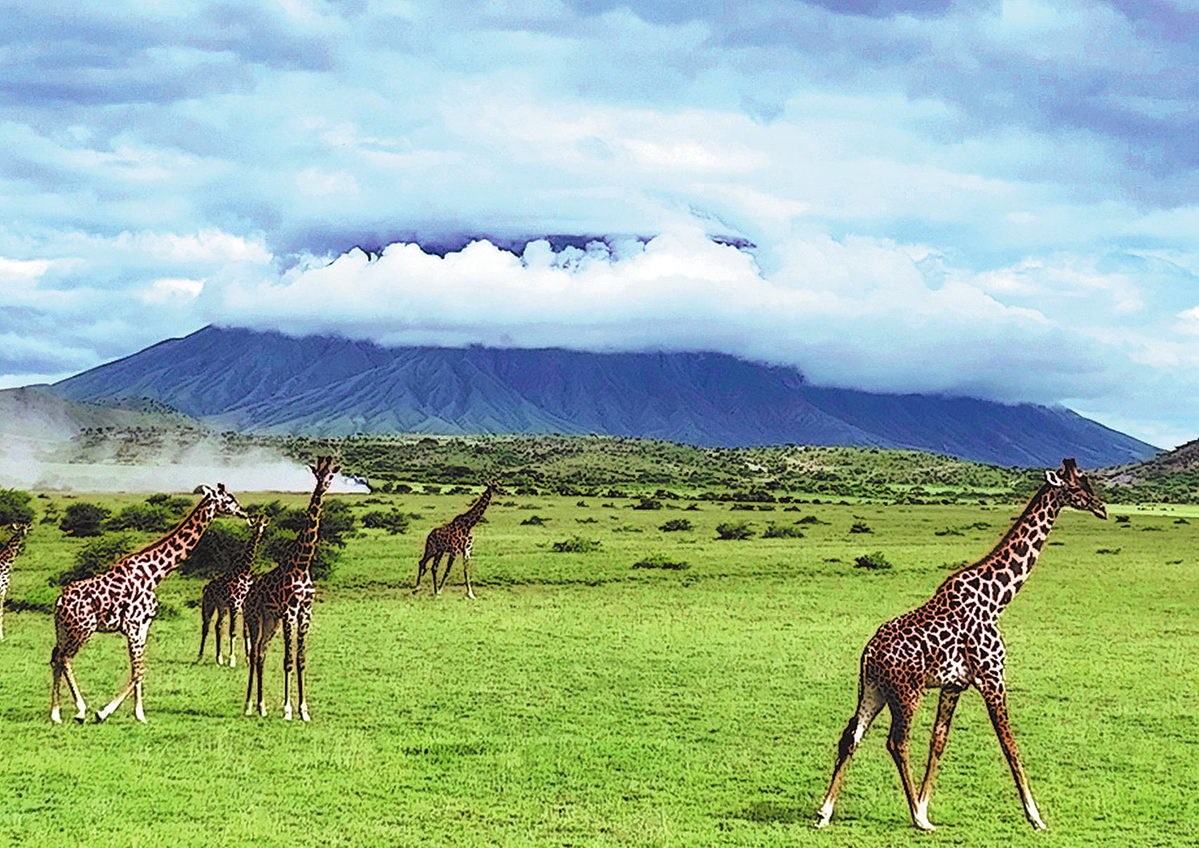
Today's Top News
- China targets increasing average life expectancy to 80 years
- Xi chairs symposium to solicit non-CPC personages' opinions on drafting five-year plan recommendations
- Nation's green tech in mining highlighted
- China's growth brings chances for US too
- Greater sophistication new hallmark of foreign business
- Session charts predictability through new plans
















